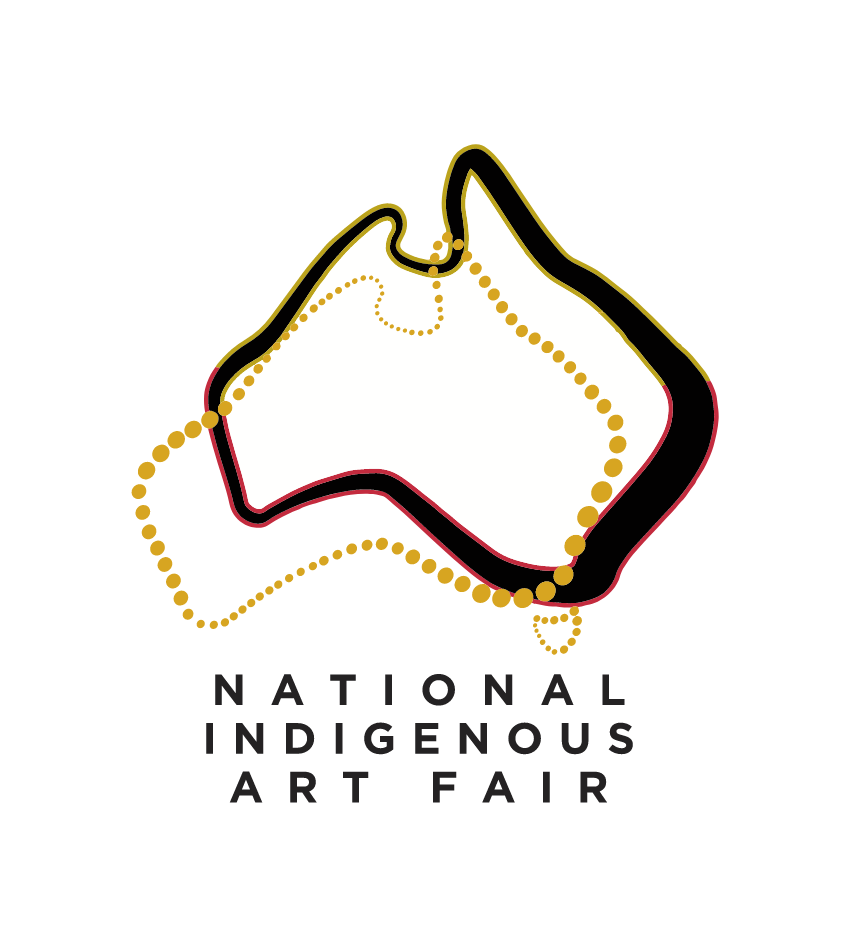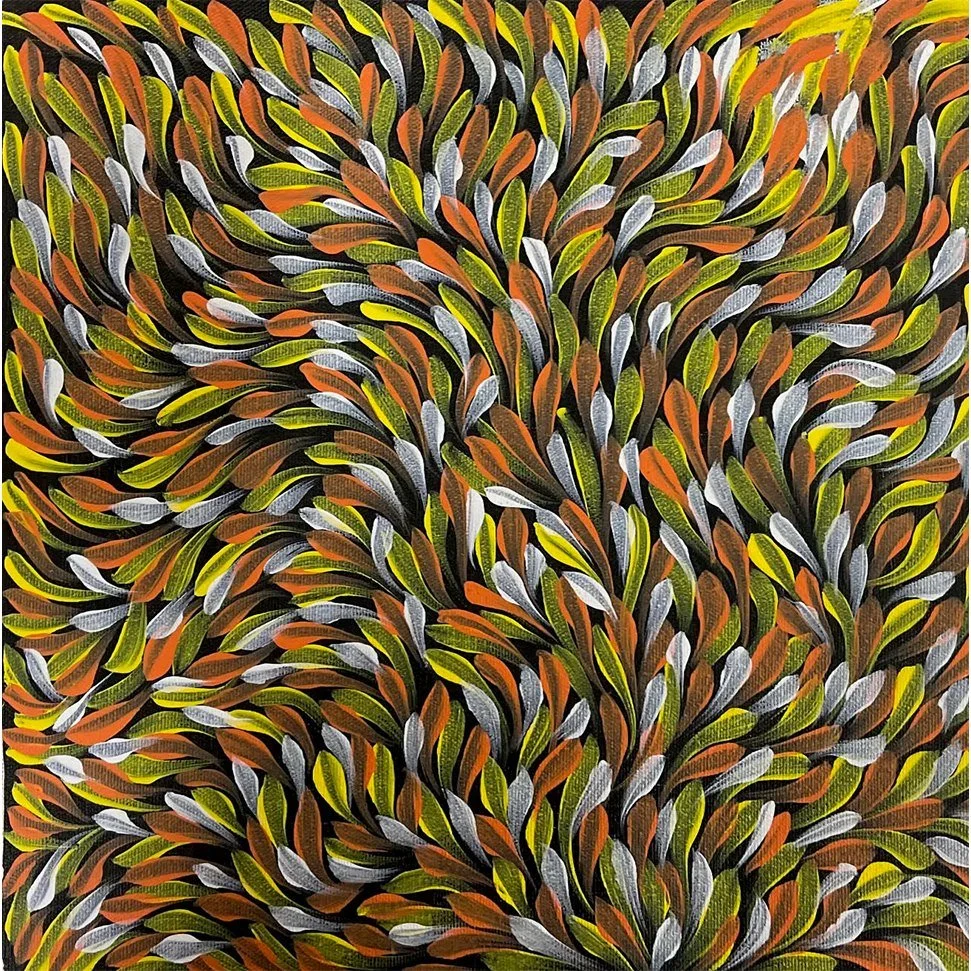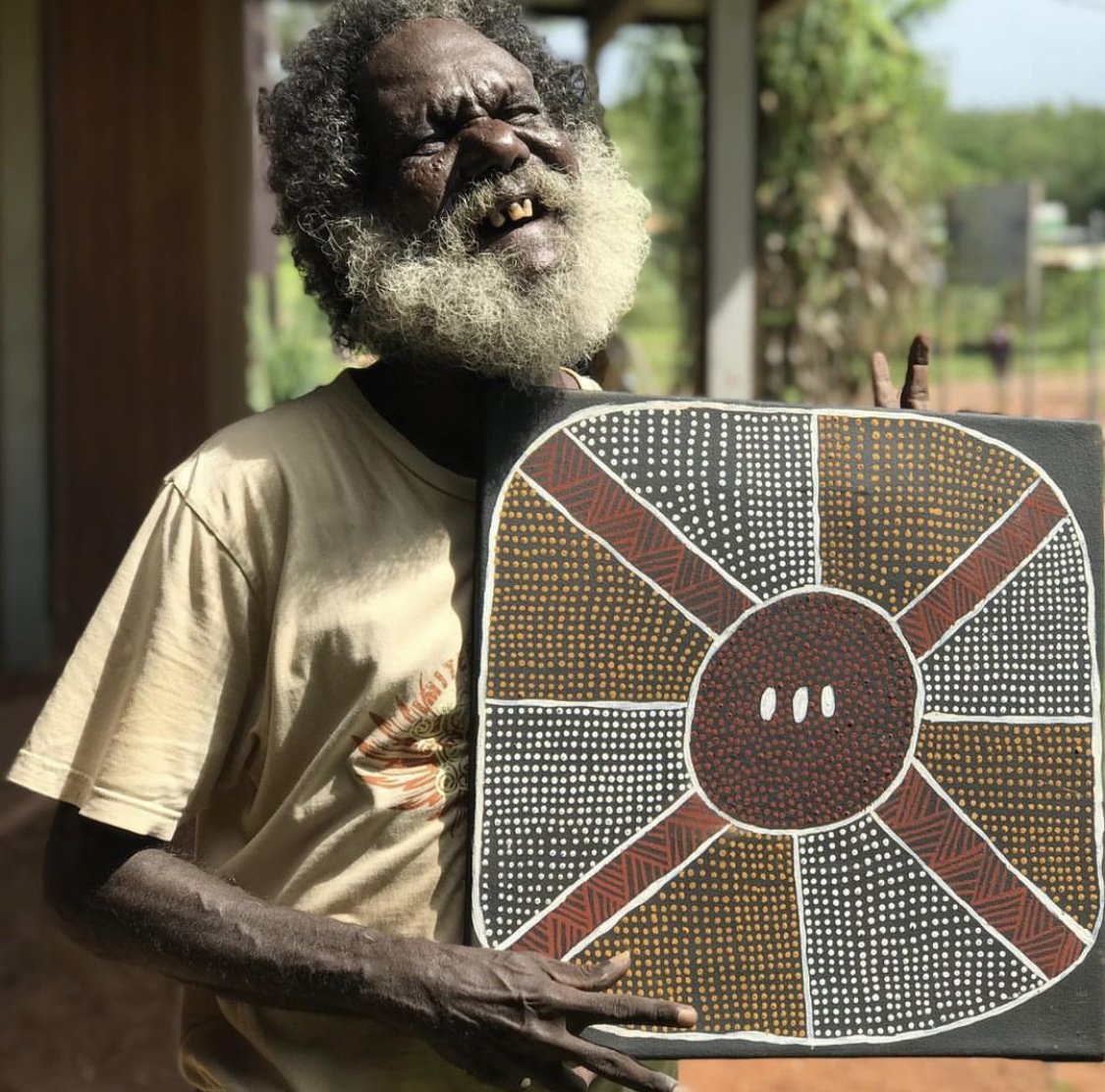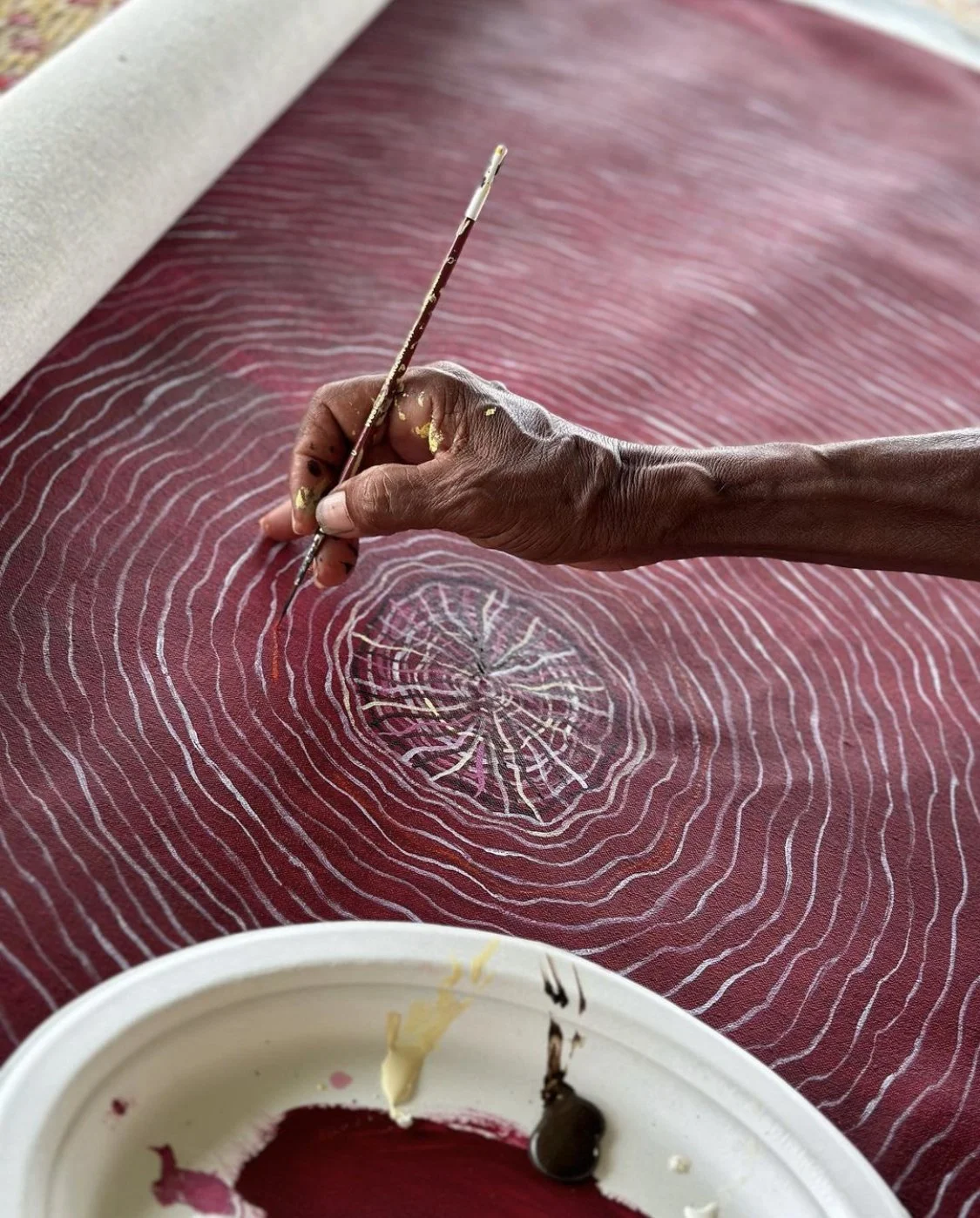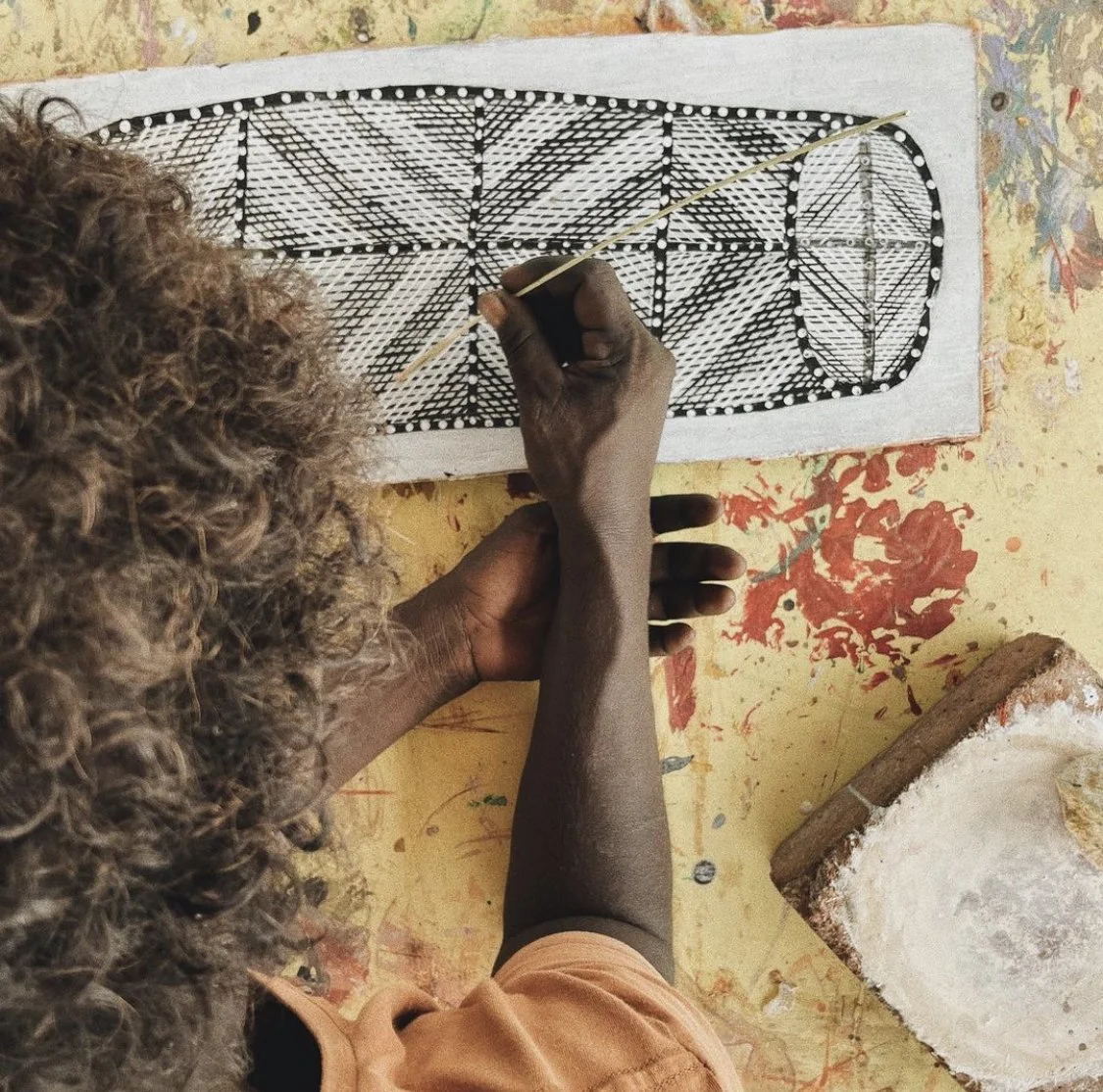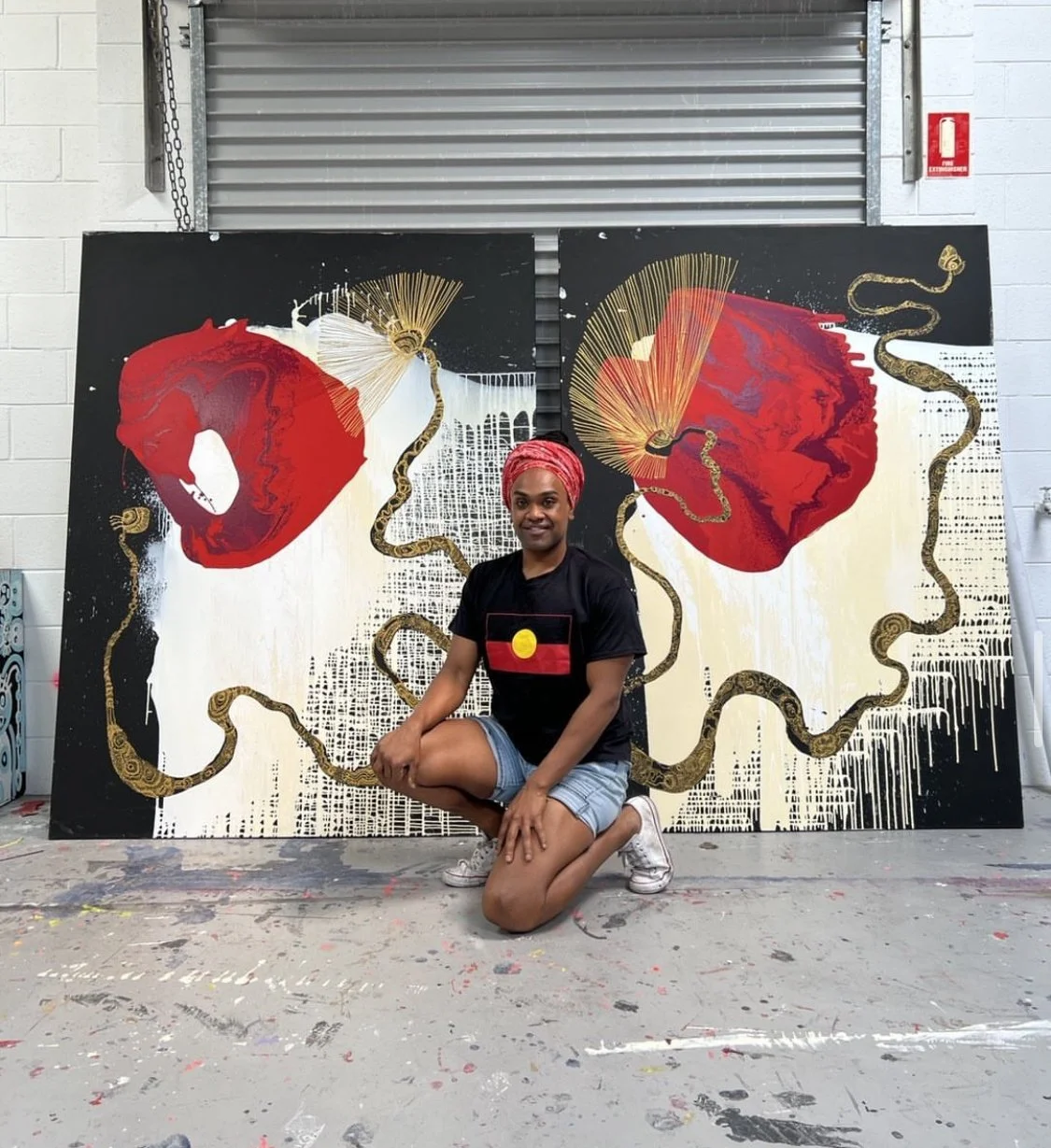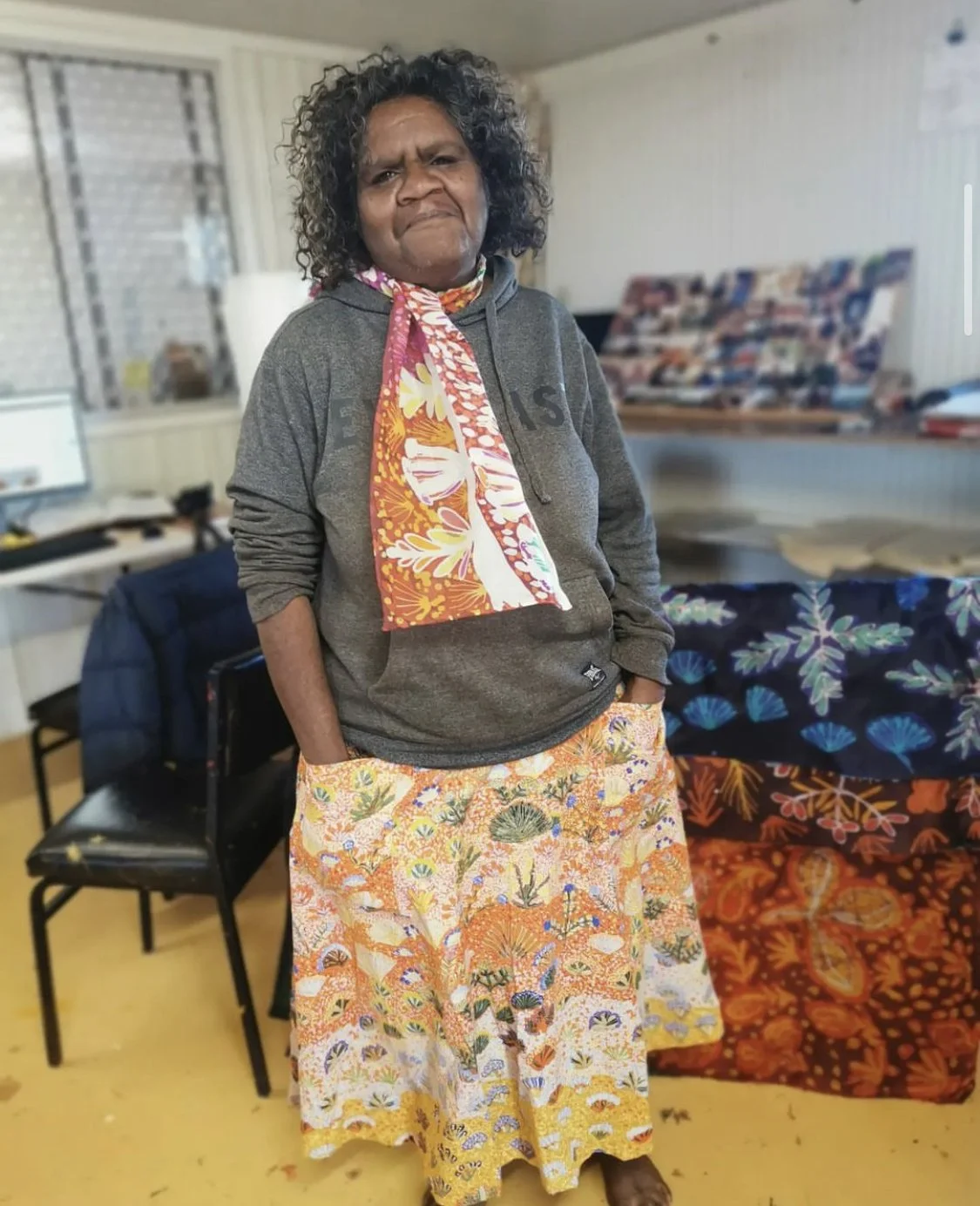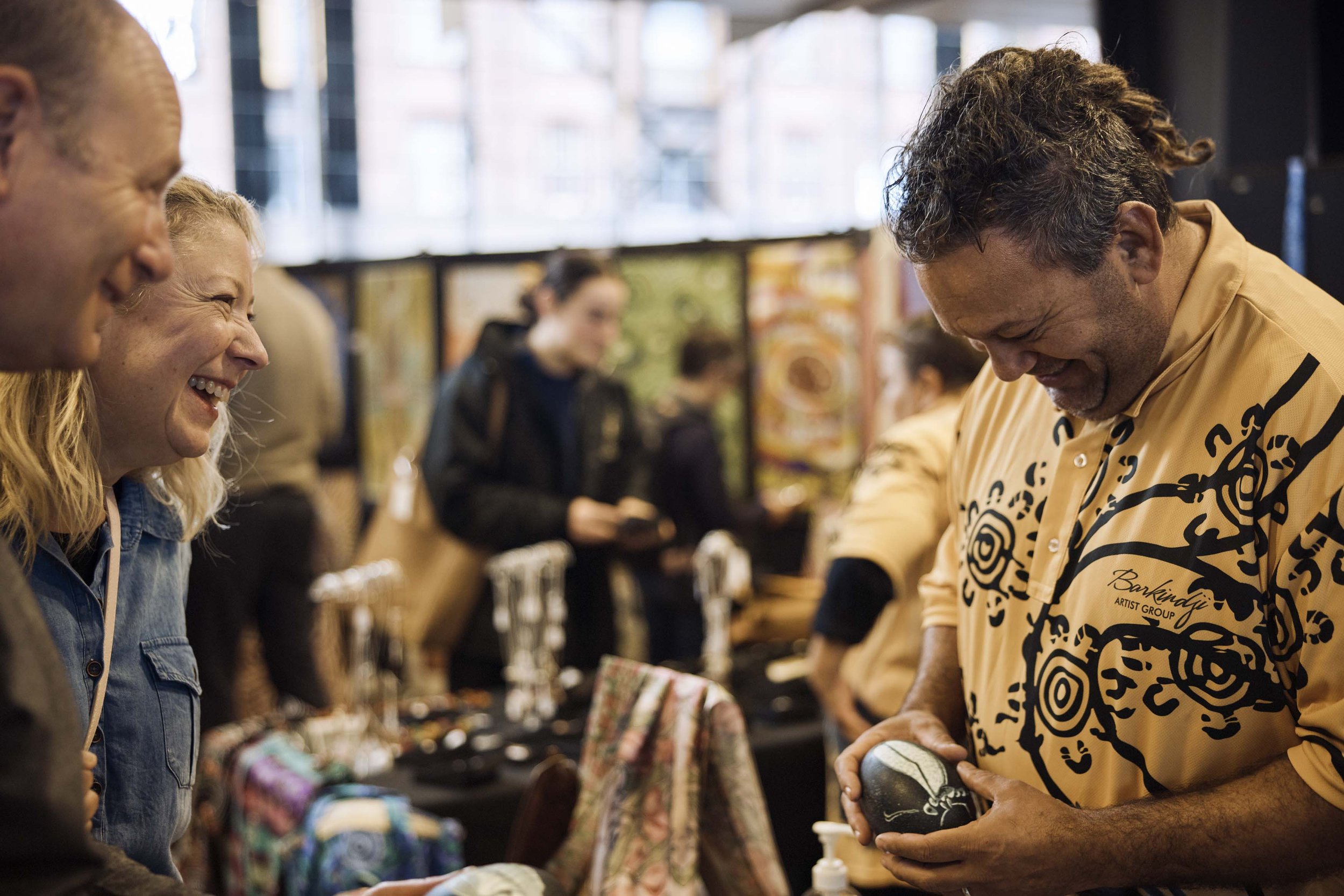
Art centres attendeding NIAF 2024
We started our Art Fair to support remote art centres to:
Develop and grow a viable pathway to address the extreme economic exclusion experienced by residents of Australia’s remote Indigenous communities.
Ensure every dollar from your purchase goes directly to the artists and their Indigenous owned and governed art centres
Develop their Indigenous lead governance structure leading to Indigenous leadership in the arts and in the business and community lead decisions they make
Maintain and strengthen cultural practices
Ensure people can continue to live on their homelands leading to the preservation of languages and culture
Provide meaningful employment for Indigenous women – who make up around 70% of artists.
Generate income as Art centre sales are often the only externally generated source of income.
Art centres attending 2024
Waralungku Arts (pronounced Wharr Ral Loonghu) is an indigenous art centre located in the remote town of Borroloola. NT. It is not-for-profit, and fully owned and governed by Aboriginal peoples of the region. Waralungku Arts represents artists the from four main language groups – Yanyuwa, Garrwa, Marra and Gudanji.
Waralungku artists are producing vibrant contemporary work which reflects history and tradition, but also speaks of current issues and concerns for Aboriginal people of today.
Central to the Engawala Art Centre mandate is providing professional development opportunities for local artists to expand their artistic horizons, encompassing mediums such as painting, screen printing, pottery, and carving.
At Lockhart River Arts Indigenous Corporation, a diverse array of creative talents converges, encompassing painters, weavers, and crafters. Among them are "The Old Girls," a revered assembly of elders whose vibrant artworks have captivated the art world, earning them esteemed recognition.
Complementing this esteemed group are younger contemporary artists, recipients of prestigious art prizes and awards, whose works adorn major public and private collections.
The Art Centre remains steadfast in its mission to nurture, collaborate with, promote, and advocate for indigenous Lockhart River artists. It proudly showcases their diverse range of creations, spanning paintings, ceramics, prints, basket weaving, and other traditional craftworks.
The term Jilamara describes "design" based on ceremonial ochre markings on the body. Reimagining these styles at the art centre has fostered a dynamic creative field for maintaining Tiwi knowledge, as well as sharing and celebrating contemporary living culture. These performative foundations have directed the organisation’s course for decades, from its origins in translating jilamara design to screen-printed garments as an adult education centre in the 1980s to producing major exhibition outcomes as an indigenous governed art centre in more recent decades.
Papunya Tjupi Arts is a 100% Aboriginal owned and directed community arts organisation based in Papunya, the birthplace of the Western Desert painting movement. The artists of Papunya Tjupi have established their own unique identity based on the legacy of their forefathers. The Art Centre, located 250km NW of Alice Springs/Mparntwe, supports emerging artists and some of Australia’s leading contemporary painters.
"The Artists of the Barkly Collective represents over fifty Aboriginal artists living in five remote communities across the Barkly region: Mungkarta, Kulumindini (Elliott), Owairtilla (Canteen Creek), Tennant Creek and Wutunugurra (Epenarra). The Collective includes seven language groups; Alyawarr, Kaytetye, Mudburra, Jingili, Waramungu, Warlpiri and Warlmanpa.
The Artists of the Barkly employ contemporary mediums to celebrate and preserve ancient cultures and languages. The vast breadth of variety in work made across the Collective reflects its cultural diversity, whilst shared elements of visual language illustrate the role of art centres in multi-generational knowledge-sharing.
The Collective is facilitated by Barkly Regional Arts, a not-for-profit multi-disciplinary art centre based on Waramungu Country. Barkly Regional Arts collaborates with remote Indigenous communities to foster access, development, and recognition of arts in the Barkly.
The Artists of the Barkly will be bring paintings and selection of ceramics to NAIF."
Minyma Kutjara tjukurpa (Two Women creation story) is an important dreaming from the western and southern deserts of Australia which tells the story of two sister’s epic journey as they travel home across the Lands. Through sacred inma (storytelling, song and dance), their actions create sacred landmarks, such as rock holes and mountain ranges which are imbedded with important woman’s business and ceremony. Irrunytju Community sits at the base of a Minyma Kutjara site called Ultiju Kapi (Two Hills)
We will bring acrylic paintings, tatu, traditional necklaces made by our artists and some tin machines painted and made by them.
Durrmuarts is renowned for its fine, contemporary art production, particularity acrylic painting and fibre work. Senior artist Regina Pilawuk Wilson (winner, general painting, Telstra National Indigenous Art Award 2003) leads a team of talented, established and emerging artists.
The paintings of Peppimenarti are based upon traditional weaving and durrmu (dot body painting) designs. These are complemented by the women artists’ premium pandanus and sand-palm fibre weaving work.
The women of Peppimenarti are traditionally weavers and have transposed their knowledge of fibre and textiles onto the canvas. The results are paintings of intricate, abstract mark-making; some clearly representing syaw (fishnet) and wupun (basket weaving) through their layered textures, whilst others resemble fine tapestries. The men’s art lies in the production of body paint designs and cultural articles. Many of the male artists paint their inherited didgeridoo designs.
Marrawuddi Arts and Culture is a beautiful Community Arts Centre located in the repurposed Jabiru Bakery in the heart of the World Heritage Listed Kakadu National Park.
The stunningly renovated building, which welcomes dozens of visitors daily, features a vibrant working space for artists use as well as a beautiful exhibition area and delicious coffee. Tourists are encouraged to spend time with artists and learn about the beautiful artworks available for purchase. The quality of artworks for sale at Marrawuddi is exceptional and all stock is created by artists living in or around the Kakadu and wider West Arnhem region.
UMI Arts is the peak Aboriginal
and Torres Strait Islander Cultural organisation for Cairns and Far North Queensland.
Established in 2005 UMI Arts mission is to operate an Indigenous organisation that assists Aboriginal and Torres Strait Islander peoples to participate in the maintenance, preservation and protection of cultural identity.
UMI Arts is a not-for-profit company managed by an all-Indigenous Board of Directors.
Keringke Art Centre is situated in the community of Ltyentye Apurte in the Central Australian region of the Northern Territory.
The community was named for the stand of bloodwood trees that grow at the foot of hills to the west. Keringke Arts was named after an important and ancient rock-hole nearby that was formed when an ancestor Kangaroo travelled through the country. Several of the Keringke Artists have responsibilities associated with the Keringke Rockhole site.
Keringke Art Centre began with a nine week fabric-painting course back in 1987.
The APY Art Centre Collective are a group of Indigenous-owned and governed art centres that work together on innovative artistic projects, and strong business initiatives. Our art centre businesses are the beating heart of our communities. Our vision is to support every person of working age to have culturally affirming employment and an independentincome so that they can succeed in our world and yours.
Community was established in 1999 near Alice Springs in the Northern Territory. The work produced by the artists is recognisably distinct from other Aboriginal artistic communities, due to the application of fine dots and the often bright and figurative depiction of the land.
Tjarlirli Art Centre represents the artists of Tjukurla in the Ngannyatjarra lands of Western Australia. The artwork has strong links with the Papunya Tula movement as families left Kintore and Kiwirrkurra to return to their homelands in the mid 1980s. Tjarlirli Art manages a second art centre, Kaltukatjara Art, representing the artists of Kaltukatjara (Docker River) in the Pitjantjatjarra lands of the Northern Territory. There are close ties and family links between these communities.
Warlukurlangu Artists is one of the longest running and most successful Aboriginal-owned art centres in Central Australia.
It has a national and international profile and its art has been featured in hundreds of exhibitions and publications in Australia and around the world.
Warlukurlangu means ‘belonging to fire’ in the local language, Warlpiri, and is named after a fire dreaming site west of Yuendumu.
Ikuntji Artists was the first art centre established by women in the Western Desert Art Movement. Already in the 1980s women began painting in Haasts Bluff in the aged care facility. They had been instructed by their husbands and fathers, and they had often assisted them in completing their paintings. By the early 1990s these women artists decided to pursue setting up their own art centre.
Munupi Arts & Crafts Association is located along Melville Island's north-western coastline at Pirlangimpi (Garden Point) and is the most recently formed art centre on the Tiwi Islands. In 1990 the Yikikini Women’s Centre and Pirlangimpi Pottery were incorporated under the name Munupi Arts and Crafts Association giving local artists an opportunity to proudly celebrate Tiwi culture through both traditional and contemporary mediums.
For 25 years Munupi Arts has been a vital meeting place for the Tiwi people of the Pirlangimpi community for employment, cultural pride and well being.
Munupi Art is wholly indigenous owned and governed.
Ngukurr Art Centre sits a stone’s throw from the banks of the Roper River in Ngukurr, South East Arnhem Land. The Art Centre, like the town of Ngukurr, is unique – bringing together people of many different clans and language groups including Ngalakgan, Alawa, Mangarrayi, Ngandi, Marra, Warndarrang, Nunggubuyu, Ritharrngu-Wägilak and Rembarrnga. Together these clans are known as Yugul Mangi.
Our talented artists and craftspeople make artworks year round in remote Arnhem Land in the Northern Territory inspired by their culture and local environment. All items offered for sale are made in Gunbalanya (Oenpelli) and the homelands.
Gapuwiyak is a remote Art Centre in east Arnhemland. We are owned by our Yolŋu members and support over one hundred artists from Gapuwiyak and surrounding homelands.
There are eighteen clans in this region each with their own interconnected clan estates, songs, patterns and designs.
Well known for its vibrant desert colours, Walkatjara artwork is filled with the timeless Creation stories of Uluru as well as traditional aspects of desert life, helping keep Anangu culture and knowledge strong into the future.
Proudly Yolngu; Bula’Bula Arts, is situated in Ramingining within Gurrwiliny (Arafura wetlands) and is part of Northeast Arnhem Land. Our mission is to foster Yolngu culture Bula’bula represents strong professional artists producing high quality artworks telling stories of cultural lore learned through song and dance. This storytelling is reinterpreted into paintings and objects, which have traditional ritual and ceremonial significance.
